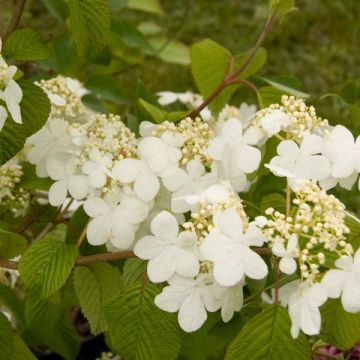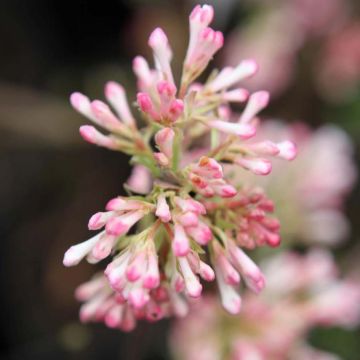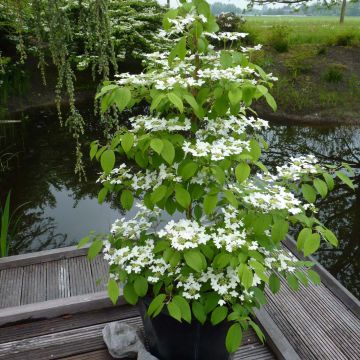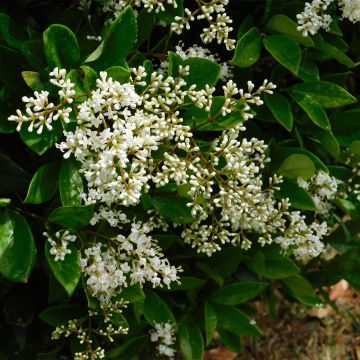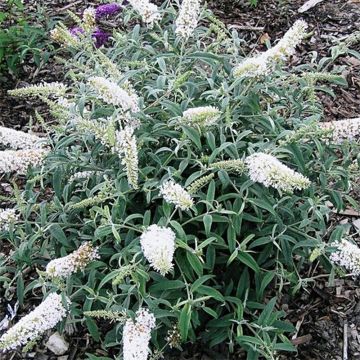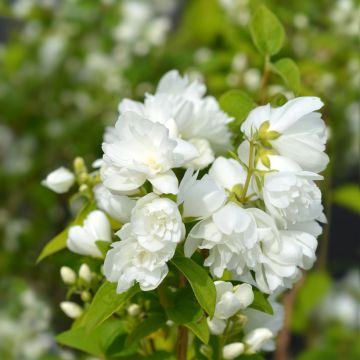

Viburnum macrocephalum Happy Fortuna - Viorne à grosse tête


Viburnum macrocephalum Happy Fortuna - Viorne à grosse tête
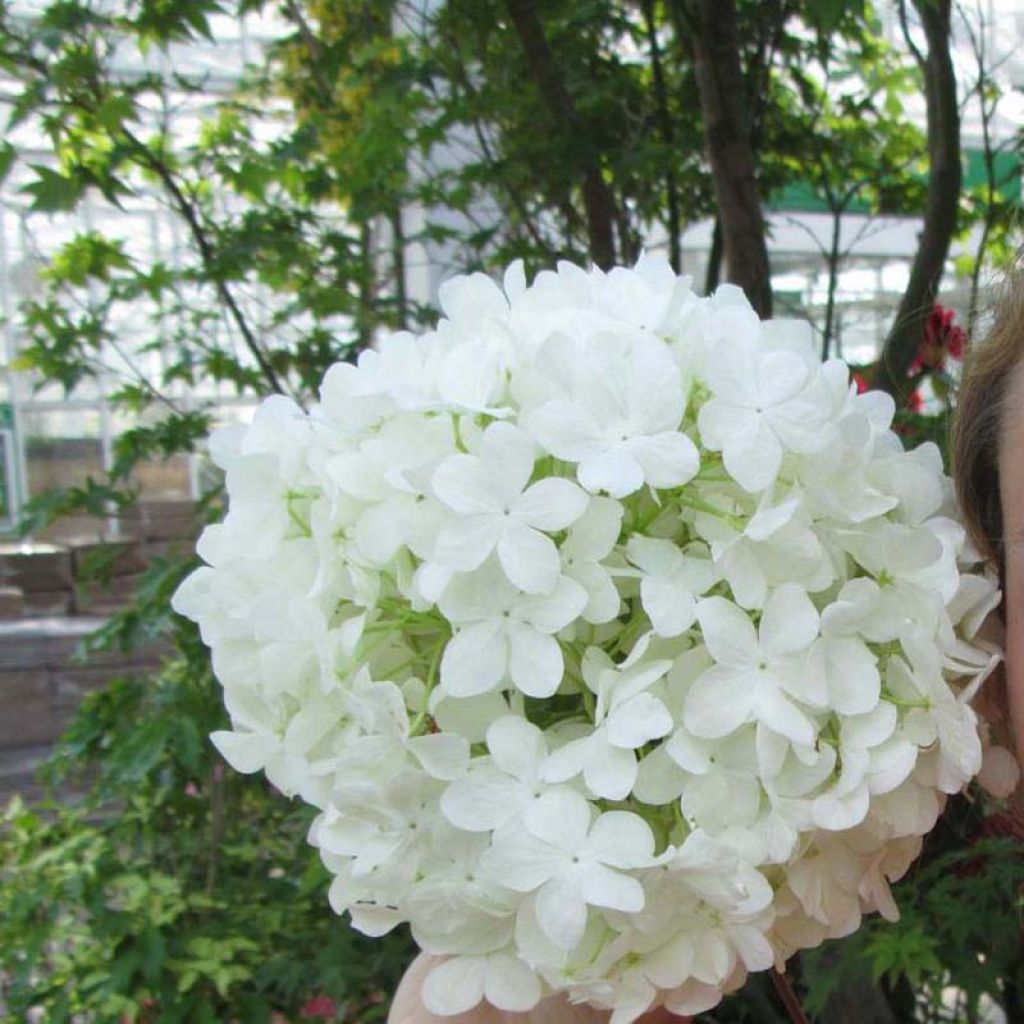

Viburnum macrocephalum Happy Fortuna - Viorne à grosse tête


Viburnum macrocephalum Happy Fortuna - Viorne à grosse tête
Viburnum macrocephalum Happy Fortuna
Viburnum macrocephalum Happy Fortuna
Chinese Snowball, Large-headed Viburnum
Very nice young plant with great potential, thank you.
Nath44, 23/03/2025
Special offer!
Receive a €20 voucher for any order over €90 (excluding delivery costs, credit notes, and plastic-free options)!
1- Add your favorite plants to your cart.
2- Once you have reached €90, confirm your order (you can even choose the delivery date!).
3- As soon as your order is shipped, you will receive an email containing your voucher code, valid for 3 months (90 days).
Your voucher is unique and can only be used once, for any order with a minimum value of €20, excluding delivery costs.
Can be combined with other current offers, non-divisible and non-refundable.
Home or relay delivery (depending on size and destination)
Schedule delivery date,
and select date in basket
This plant carries a 24 months recovery warranty
More information
We guarantee the quality of our plants for a full growing cycle, and will replace at our expense any plant that fails to recover under normal climatic and planting conditions.
Would this plant suit my garden?
Set up your Plantfit profile →
Description
Viburnum macrocephalum 'Happy Fortuna', also known as Chinese Snowball Bush, is a beautiful American novelty. This deciduous to semi-evergreen bush, with an erect habit, is adorned with enormous spherical inflorescences which are initially lime green before turning pure white. They cover its dark foliage from May to June, offering a dazzling spectacle in borders. The enchantment continues in autumn, when its beautiful ovate leaves come alive with flamboyant colours. This cousin of the famous Snowball Bush has the characteristic of producing only sterile flowers, and therefore no fruits. Very hardy, it grows in any deep, fertile and moist soil, in full sun or partial shade.
Viburnum macrocephalum is a mountainous viburnum belonging to the Viburnaceae family, native to the forests of central China where it is found at an altitude between 400 and 1000m (1312 and 3281ft). In its natural environment, it can reach a height of 4m (13ft), but its dimensions will be more modest in our climates.
The 'Happy Fortuna' variety, recently obtained in the United States, is a bush with an erect and rounded habit, measuring 1.5 to 2.5m (5 to 8ft) in height and 1 to 2m (3 to 7ft) in width. Its inflorescences, which appear in late spring, resemble huge hydrangea balls, composed of numerous sterile florets that start off light green and then become immaculate white. The pubescent buds are visible in winter on hairy young shoots. Its oval and leathery foliage sometimes persists through mild winters. The 10cm (4in) long leaves show a dark green colour, and then they turn red and yellow in autumn, making its ornamental value in the garden twofold. The bark of this bush is grey-brown to greyish-white.
Completely hardy, the Chinese Snowball Bush thrives in sunny or partially shaded locations. While the obvious beauty of its flowering cannot be ignored, this bush does not tire; it modestly fades away once it has finished blooming, giving way to summer-flowering shrubs, only to reappear in autumn with a flamboyant coat. It can be used as a standalone specimen to attract attention in small gardens. In larger gardens, plant in informal hedges or in borders to create a beautiful backdrop alongside lilacs, weigelas, and hydrangeas. Its wonderful spherical clusters can be used in spring bouquets, accompanied by peonies and irises.
Report an error about the product description
Viburnum macrocephalum Happy Fortuna in pictures






Plant habit
Flowering
Foliage
Botanical data
Viburnum
macrocephalum
Happy Fortuna
Caprifoliaceae
Chinese Snowball, Large-headed Viburnum
Cultivar or hybrid
Other Viburnum
View all →Planting and care
Viburnum macrocephalum 'Happy Fortuna' thrives in sunny or semi-shaded locations. Plant it in deep, moist, light, humus-rich soil and avoid excessively chalky soils. Add ericaceous soil to the planting substrate if necessary. Abundant watering after planting and in the following few weeks will ensure its successful establishment.
Planting period
Intended location
Care
-
, onOrder confirmed
Reply from on Promesse de fleurs
Similar products
Haven't found what you were looking for?
Hardiness is the lowest winter temperature a plant can endure without suffering serious damage or even dying. However, hardiness is affected by location (a sheltered area, such as a patio), protection (winter cover) and soil type (hardiness is improved by well-drained soil).

Photo Sharing Terms & Conditions
In order to encourage gardeners to interact and share their experiences, Promesse de fleurs offers various media enabling content to be uploaded onto its Site - in particular via the ‘Photo sharing’ module.
The User agrees to refrain from:
- Posting any content that is illegal, prejudicial, insulting, racist, inciteful to hatred, revisionist, contrary to public decency, that infringes on privacy or on the privacy rights of third parties, in particular the publicity rights of persons and goods, intellectual property rights, or the right to privacy.
- Submitting content on behalf of a third party;
- Impersonate the identity of a third party and/or publish any personal information about a third party;
In general, the User undertakes to refrain from any unethical behaviour.
All Content (in particular text, comments, files, images, photos, videos, creative works, etc.), which may be subject to property or intellectual property rights, image or other private rights, shall remain the property of the User, subject to the limited rights granted by the terms of the licence granted by Promesse de fleurs as stated below. Users are at liberty to publish or not to publish such Content on the Site, notably via the ‘Photo Sharing’ facility, and accept that this Content shall be made public and freely accessible, notably on the Internet.
Users further acknowledge, undertake to have ,and guarantee that they hold all necessary rights and permissions to publish such material on the Site, in particular with regard to the legislation in force pertaining to any privacy, property, intellectual property, image, or contractual rights, or rights of any other nature. By publishing such Content on the Site, Users acknowledge accepting full liability as publishers of the Content within the meaning of the law, and grant Promesse de fleurs, free of charge, an inclusive, worldwide licence for the said Content for the entire duration of its publication, including all reproduction, representation, up/downloading, displaying, performing, transmission, and storage rights.
Users also grant permission for their name to be linked to the Content and accept that this link may not always be made available.
By engaging in posting material, Users consent to their Content becoming automatically accessible on the Internet, in particular on other sites and/or blogs and/or web pages of the Promesse de fleurs site, including in particular social pages and the Promesse de fleurs catalogue.
Users may secure the removal of entrusted content free of charge by issuing a simple request via our contact form.
The flowering period indicated on our website applies to countries and regions located in USDA zone 8 (France, the United Kingdom, Ireland, the Netherlands, etc.)
It will vary according to where you live:
- In zones 9 to 10 (Italy, Spain, Greece, etc.), flowering will occur about 2 to 4 weeks earlier.
- In zones 6 to 7 (Germany, Poland, Slovenia, and lower mountainous regions), flowering will be delayed by 2 to 3 weeks.
- In zone 5 (Central Europe, Scandinavia), blooming will be delayed by 3 to 5 weeks.
In temperate climates, pruning of spring-flowering shrubs (forsythia, spireas, etc.) should be done just after flowering.
Pruning of summer-flowering shrubs (Indian Lilac, Perovskia, etc.) can be done in winter or spring.
In cold regions as well as with frost-sensitive plants, avoid pruning too early when severe frosts may still occur.
The planting period indicated on our website applies to countries and regions located in USDA zone 8 (France, United Kingdom, Ireland, Netherlands).
It will vary according to where you live:
- In Mediterranean zones (Marseille, Madrid, Milan, etc.), autumn and winter are the best planting periods.
- In continental zones (Strasbourg, Munich, Vienna, etc.), delay planting by 2 to 3 weeks in spring and bring it forward by 2 to 4 weeks in autumn.
- In mountainous regions (the Alps, Pyrenees, Carpathians, etc.), it is best to plant in late spring (May-June) or late summer (August-September).
The harvesting period indicated on our website applies to countries and regions in USDA zone 8 (France, England, Ireland, the Netherlands).
In colder areas (Scandinavia, Poland, Austria...) fruit and vegetable harvests are likely to be delayed by 3-4 weeks.
In warmer areas (Italy, Spain, Greece, etc.), harvesting will probably take place earlier, depending on weather conditions.
The sowing periods indicated on our website apply to countries and regions within USDA Zone 8 (France, UK, Ireland, Netherlands).
In colder areas (Scandinavia, Poland, Austria...), delay any outdoor sowing by 3-4 weeks, or sow under glass.
In warmer climes (Italy, Spain, Greece, etc.), bring outdoor sowing forward by a few weeks.
































